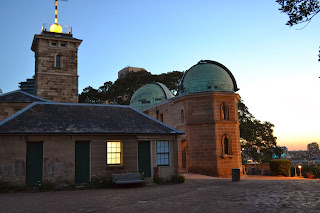Saturday, October 26, 2013
M45 - Pleiades
This beautiful cluster of stars is an easy object to pick out of the night sky as the summer turns to fall and into winter. At this time of year, it hovers in the eastern sky after nightfall. With the naked eye, it looks a bit like a question mark and is sometimes called the Seven Sisters. Through a telescope, you can begin to see some faint nebulosity around some of the stars.
The Pleiades have been well known since prehistoric times and figures into many cultures' mythology. It shows up around 2500 BC in Mesopotamian mythology and Homer mentions it in the Odyssey. It's also described in the Bible three times. The passage from Revelations 1:16 is striking as it describes the second coming of the Messiah:
"And he had in his right hand seven stars: and out of his mouth went a sharp two edged sword: and his countenance was as the sun shineth in his strength."
I found this passage from Alfred Lord Tennyson's poem Locksley Hall a beautiful description:
"Many an night I saw the Pleiades, rising thro' the mellow shade, Glitter like a swarm of fireflies tangled in a silver braid."
Photo Details
Messier 45 - The Pleiades (Seven Sisters)
October 24, 2013
Orion 8" Astrograph on VX Mount
Nikon D3100 Camera
30 sub frames at 15"/frame
Total Exposure Time = 7.5 minutes
Image Stacking in Deep Sky Tracker
Image Processing in Fitswork
Friday, October 25, 2013
Messiers 31, 32 and 110
The main event in this photo is the gorgeous Andromeda Galaxy (M31). There are observations of this galaxy dated to 905 AD by Persian Astronomers. In a dark sky, it is a naked-eye object, though not with this kind of detail. It spans a whopping 160,000 light years across and contains an estimated 700,000,000,000 solar masses. It's hard to even comprehend the number of stars and worlds we are looking at in this one picture. Complete humbling. It is the closest galaxy to our own Milky way and it was Edwin Hubble who first figured out a reasonably accurate distance and that it wasn't part of the Milky Way.
The other two objects in the photo are M32 (below) and M110 (above). M32 and M110 are physical companions of Andromeda; locked in a gravity-driven cosmic dance. Compared directly to Andromeda, they may not look like much, but both are galaxies in their own right.
Photo Details
Messiers 31, 32 and 110
October 23, 2013
Orion 8" Astrograph on VX Mount
Nikon D3100 Camera
58 sub frames at 30"/frame
Total Exposure Time = 29 minutes
Image Stacking in Deep Sky Tracker
Image Processing in Fitswork
Sunday, October 6, 2013
Southern Skies
Sydney Observatory
Night Shot of Scorpius at Sydney Observatory
Australia's Oldest Working Telescope
While traveling in Australia, we had the great opportunity to visit the Sydney Observatory. It's in the heart of Sydney, overlooking Sydney Harbor. A gorgeous site for an observatory, except for all the sky glow. Despite that, we had a great time, learned a lot about the southern sky, were privileged to gaze through Australia's oldest operational telescope and even try a night shot of Scorpius outside the observatory. All around, a fantastic time!
Subscribe to:
Comments (Atom)




